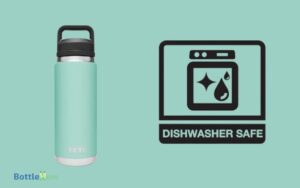Does a Hot Water Bottle Help Appendicitis? Explained!
Using a hot water bottle for appendicitis isn’t advisable. Heat can exacerbate inflammation and potentially worsen the condition.
Appendicitis involves acute inflammation of the appendix, which requires prompt medical intervention.
Symptoms like severe abdominal pain and localized tenderness in the lower right abdomen are critical indicators that necessitate immediate medical evaluation.
Application of heat can increase blood flow and pressure, risking a perforation of the inflamed appendix, which could lead to peritonitis.
For effective pain management and proper treatment strategies, professional medical consultation is essential. Discover more on safer pain relief methods and when to seek urgent care.

Key Takeaways
Understanding Appendicitis
Appendicitis is an acute inflammation of the appendix, often resulting in severe abdominal pain and requiring prompt medical intervention.
You should know that the appendix is a small, finger-like pouch attached to the large intestine. When it becomes blocked, either by fecal matter, a foreign body, or cancer, it can lead to bacterial overgrowth and inflammation.
This condition creates a medical emergency because untreated appendicitis can lead to rupture, causing peritonitis or abscess formation.
Diagnosis typically involves a combination of clinical evaluation, laboratory tests, and imaging studies like ultrasound or CT scans.
Immediate surgical removal, known as an appendectomy, is the gold standard for treatment to prevent complications. Understanding the pathology is essential for recognizing the urgency of medical care.
Symptoms of Appendicitis
You should recognize early symptoms of appendicitis, including abdominal pain and nausea.
It’s essential to identify severe pain indicators such as sharp, localized pain in the lower right abdomen and rebound tenderness. These clinical signs necessitate prompt medical evaluation to prevent complications.
Common Early Symptoms
Essential symptoms of appendicitis often include acute abdominal pain, typically starting near the navel and later localizing to the lower right quadrant.
You may also experience additional symptoms such as nausea, vomiting, and a low-grade fever. The pain usually worsens with movement, coughing, or sneezing, indicating inflammation.
| Symptom | Description |
|---|---|
| Abdominal Pain | Starts near navel, moves to lower right quadrant |
| Nausea | Often accompanies the onset of pain |
| Low-grade Fever | Mild increase in body temperature |
Clinical studies show these symptoms are common early indicators of appendicitis. Recognizing them can help in seeking timely medical intervention, potentially preventing complications.
It’s essential to avoid self-treatment with a hot water bottle, as this could exacerbate inflammation, leading to further discomfort. Instead, seeking medical advice can help determine the underlying cause and the most effective treatment. Using a hot water bottle for diarrhea may provide temporary relief, but it can also worsen symptoms if inflammation is present. It’s best to opt for doctor-recommended remedies to ensure proper healing and comfort.
Severe Pain Indicators
When appendicitis progresses, severe pain often manifests as intense, localized tenderness in the lower right quadrant of the abdomen, accompanied by rebound tenderness and guarding. You’ll likely experience pain exacerbation with movement, coughing, or sneezing.
This clinical presentation is indicative of peritoneal irritation. Additionally, symptoms such as nausea, vomiting, and anorexia are common. Fever might accompany these signs, reflecting an inflammatory response.
The Rovsing’s sign, where pain is elicited in the right lower quadrant upon palpation of the left side, and the psoas sign, pain on extension of the right hip, are diagnostic indicators.
If you notice these symptoms, seek immediate medical attention; delayed treatment can lead to complications like perforation or abscess formation.
Causes of Appendicitis
Appendicitis occurs when the appendix becomes inflamed, often due to a blockage caused by fecal matter, foreign bodies, or infection.
This blockage can trigger a cascade of events, including bacterial overgrowth and pressure buildup within the appendix.
If left untreated, the inflammation can lead to perforation, releasing infectious material into the abdominal cavity and causing peritonitis, a potentially life-threatening condition.
Additionally, lymphoid hyperplasia, often secondary to viral infections, can also obstruct the appendiceal lumen.
Understanding these mechanisms is vital for timely intervention. Recognizing that the root cause is typically an obstruction or infection helps guide appropriate treatment strategies.
Immediate medical attention is essential to prevent complications and improve patient outcomes.
Diagnosing Appendicitis
Accurately diagnosing appendicitis involves a combination of clinical evaluation, laboratory tests, and imaging studies to confirm the presence of inflammation and rule out other potential causes of abdominal pain.
You’ll need a thorough physical examination where doctors palpate your abdomen to identify tenderness, particularly in the lower right quadrant. Blood tests are crucial to check for elevated white blood cell counts, indicating infection.
Imaging techniques like an ultrasound or a CT scan offer detailed visuals of your appendix, helping to detect swelling or rupture. It’s important to act quickly, as delayed diagnosis can lead to complications.
Thorough diagnostic measures ensure an accurate diagnosis, guiding effective treatment and preventing unnecessary interventions for other conditions mimicking appendicitis.
Traditional Pain Management
Traditional pain management for appendicitis often involves administering analgesics to alleviate discomfort while awaiting further medical intervention. You’ll commonly see NSAIDs and opioids prescribed to mitigate pain.
NSAIDs, like ibuprofen, reduce inflammation and provide moderate pain relief. Opioids, such as morphine, offer stronger analgesia but come with risks like respiratory depression and dependency.
Intravenous administration guarantees rapid onset and effective dosage control. Additionally, antiemetics like ondansetron may be used to address nausea and vomiting, common appendicitis symptoms.
Fluid resuscitation via IV helps maintain hydration, especially if you’re experiencing vomiting or unable to eat.
It’s important to recognize that while these measures can manage pain and symptoms, they’re not curative. Surgical intervention, typically an appendectomy, remains the definitive treatment for appendicitis.
Hot Water Bottle Basics
When using a hot water bottle for pain relief, it’s important to understand the correct method of application to maximize safety and efficacy.
A hot water bottle can provide localized heat, which can alleviate discomfort. However, improper use can lead to burns or ineffective pain management.
To guarantee safe use:
- Temperature: Fill the hot water bottle with water that’s warm, not boiling.
- Barrier: Always use a fabric cover or wrap the bottle in a towel to prevent direct skin contact.
- Duration: Limit application to 20 minutes at a time to avoid skin damage.
- Inspection: Regularly check the bottle for leaks or wear to prevent accidents.
Adhering to these guidelines will help you use the hot water bottle safely and effectively.
Heat Therapy Pros and Cons
Heat therapy provides several advantages and disadvantages that you should take into account to guarantee effective and safe pain management. It can increase blood flow, which may reduce muscle stiffness and enhance tissue healing.
However, it can also exacerbate inflammation and may not be suitable for all conditions, such as acute appendicitis.
To help you weigh the pros and cons, here’s a concise comparison:
| Pros | Cons |
|---|---|
| Increases blood flow | Can worsen inflammation |
| Reduces muscle stiffness | May not suit acute conditions |
| Enhances tissue healing | Risk of burns with improper use |
| Non-invasive | Temporary relief only |
Medical Advice on Heat
You should avoid using heat for appendicitis due to the risk of exacerbating inflammation.
Instead, consider alternative pain relief methods like analgesics or cold compresses that can mitigate symptoms without increasing complications.
Always consult a healthcare professional for personalized treatment options.
Risks of Using Heat
Despite the initial soothing effect, applying heat to the abdomen in cases of suspected appendicitis can exacerbate inflammation and increase the risk of perforation.
Heat can accelerate bacterial growth and cause the appendix to rupture, leading to peritonitis, a life-threatening infection. It’s vital to understand the potential dangers of using heat in this situation.
- Increased inflammation: Heat can enhance the inflammatory response in the appendix.
- Risk of perforation: The appendix may burst, causing severe complications.
- Enhanced bacterial growth: Warm conditions can promote bacterial proliferation.
- Delayed medical intervention: Relying on heat might delay seeking necessary medical treatment.
Understanding these risks is essential for making informed decisions about managing abdominal pain and suspected appendicitis. Always seek professional medical advice promptly.
Alternative Pain Relief Methods
When considering appendicitis, cold compresses and over-the-counter analgesics are safer alternatives for pain management. Heat can exacerbate inflammation and potentially worsen the condition.
Cold compresses reduce swelling and numb the pain, while analgesics like acetaminophen or ibuprofen offer systemic relief.
| Alternative | Mechanism | Effectiveness |
|---|---|---|
| Cold Compresses | Vasoconstriction | Reduces swelling |
| Acetaminophen | COX enzyme inhibition | Pain relief |
| Ibuprofen | Anti-inflammatory | Pain and inflammation relief |
Clinical evidence supports these methods for mitigating pain without increasing the risk of complications.
Consulting a healthcare provider if you suspect appendicitis is crucial, as timely surgical intervention can be critical. Avoid using heat on the abdomen, as it may lead to adverse outcomes.
Risks of Using Heat
Applying heat to the abdomen in cases of suspected appendicitis can exacerbate inflammation and potentially lead to a rupture.
When you use a hot water bottle, you increase blood flow to the area, which can worsen swelling and pressure in the appendix.
This can accelerate the risk of the appendix bursting, leading to severe complications such as peritonitis, a life-threatening infection of the abdominal cavity.
Consider these risks:
- Increased inflammation: Heat can intensify the inflammatory response.
- Elevated rupture risk: Enhanced pressure may cause the appendix to burst.
- Peritonitis: A burst appendix can lead to widespread infection.
- Diagnostic delays: Heat application might mask symptoms, delaying proper medical intervention.
In light of these risks, it’s crucial to seek prompt medical attention for suspected appendicitis.
Alternative Pain Relief Methods
Given the significant risks associated with using heat for suspected appendicitis, exploring alternative pain relief methods is essential.
Oral analgesics, such as acetaminophen or ibuprofen, can provide effective pain management. These medications reduce inflammation and alleviate discomfort without exacerbating underlying conditions.
Additionally, intravenous (IV) analgesics may be administered in a clinical setting for more severe pain.
Non-pharmacological methods like maintaining a supine position with legs elevated can help, as this posture reduces abdominal pressure.
Cold packs applied to the abdomen may also offer temporary relief by numbing the area and reducing inflammation.
It’s important to consult healthcare professionals before implementing these methods to make sure they’re appropriate for your specific condition.
When to Seek Medical Help
If you experience symptoms such as severe abdominal pain, nausea, or fever, you should seek immediate medical attention, as these may indicate appendicitis.
Ignoring these signs can lead to complications like a ruptured appendix, which requires emergency surgery.
While a hot water bottle may provide temporary relief, it’s important not to delay professional medical evaluation.
Signs of Appendicitis
Identifying the signs of appendicitis is essential, as timely medical intervention can prevent complications. You should be vigilant for certain symptoms that are indicative of this condition.
Appendicitis often presents with the following clinical manifestations:
- Abdominal Pain: Typically starts around the navel and shifts to the lower right abdomen.
- Loss of Appetite: A sudden reduction in the desire to eat.
- Nausea and Vomiting: Frequently accompanies the onset of abdominal pain.
- Fever: A low-grade fever that may worsen as the condition progresses.
These symptoms warrant careful observation. If you’re experiencing them, it’s important to monitor their progression.
Early detection and appropriate medical evaluation are essential in managing appendicitis effectively. Don’t ignore these signs, as untreated appendicitis can lead to severe complications.
Emergency Medical Attention
Prompt medical intervention is essential when experiencing symptoms indicative of appendicitis to prevent severe complications.
If you notice acute abdominal pain, particularly in the lower right quadrant, nausea, vomiting, or a fever, seek immediate medical attention.
Delaying care can lead to a ruptured appendix, resulting in peritonitis or abscess formation. Diagnostic tools like ultrasound or CT scans provide definitive evidence of appendicitis, and surgical intervention, typically an appendectomy, is often required.
Don’t rely on home remedies like hot water bottles; they may mask symptoms and delay necessary treatment.
Recognizing the urgency and acting promptly can greatly reduce the risk of complications and improve outcomes. Always consult a healthcare professional if you suspect appendicitis.
Post-Appendicitis Care
After an appendectomy, meticulous post-operative care is essential to prevent infections and promote a smooth recovery. You’ll need to follow specific guidelines to guarantee optimal healing.
- Wound Care: Keep the incision site clean and dry. Follow your healthcare provider’s instructions on dressing changes.
- Activity Restrictions: Avoid heavy lifting and strenuous activities for at least four to six weeks.
- Pain Management: Take prescribed pain medications as directed. Over-the-counter options like acetaminophen can also be effective.
- Dietary Adjustments: Start with clear fluids and gradually reintroduce solid foods as tolerated to avoid gastrointestinal disturbances.
Monitor for signs of complications, such as increased pain, redness, swelling, or discharge from the incision site, and contact your healthcare provider if they occur.
Conclusion
In summary, using a hot water bottle for appendicitis pain is like applying a band-aid on a deep wound; it might provide temporary comfort but won’t address the underlying problem.
Clinical studies indicate that heat can exacerbate inflammation, potentially worsening your condition. Seek medical attention immediately if you suspect appendicitis.
Effective pain management and timely surgical intervention are vital for recovery and preventing complications. Always prioritize professional medical advice over home remedies for serious conditions like appendicitis.





